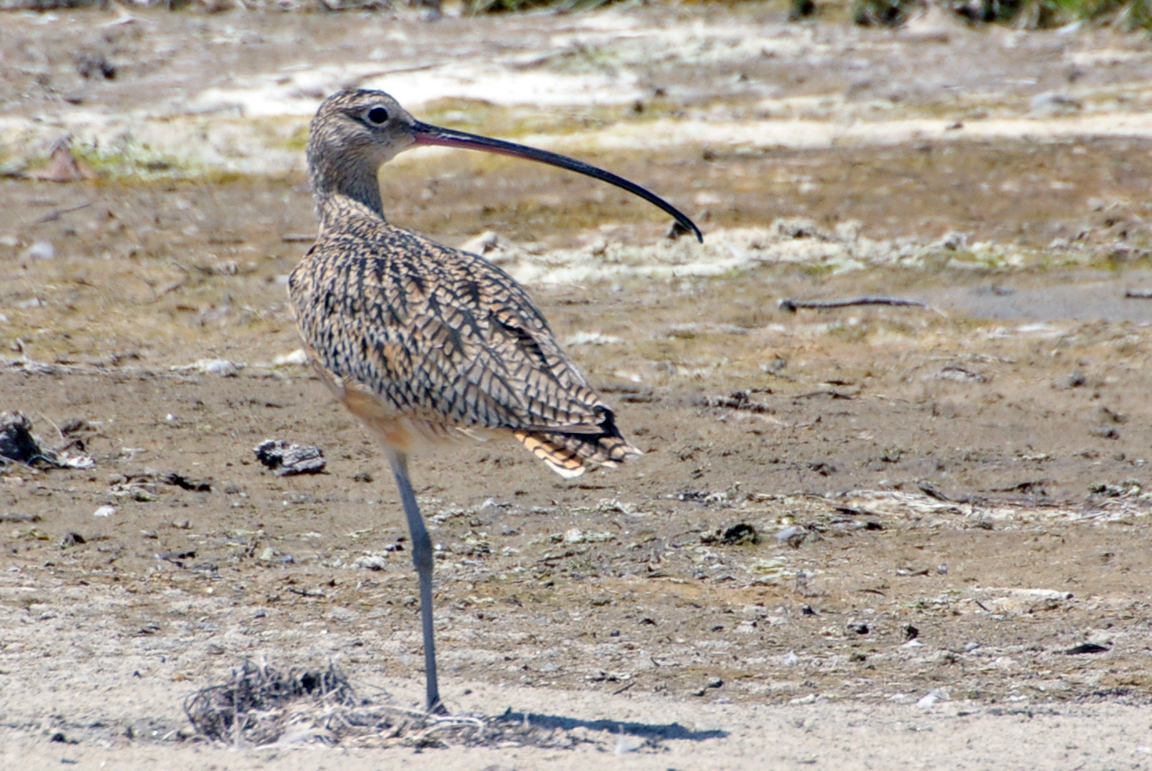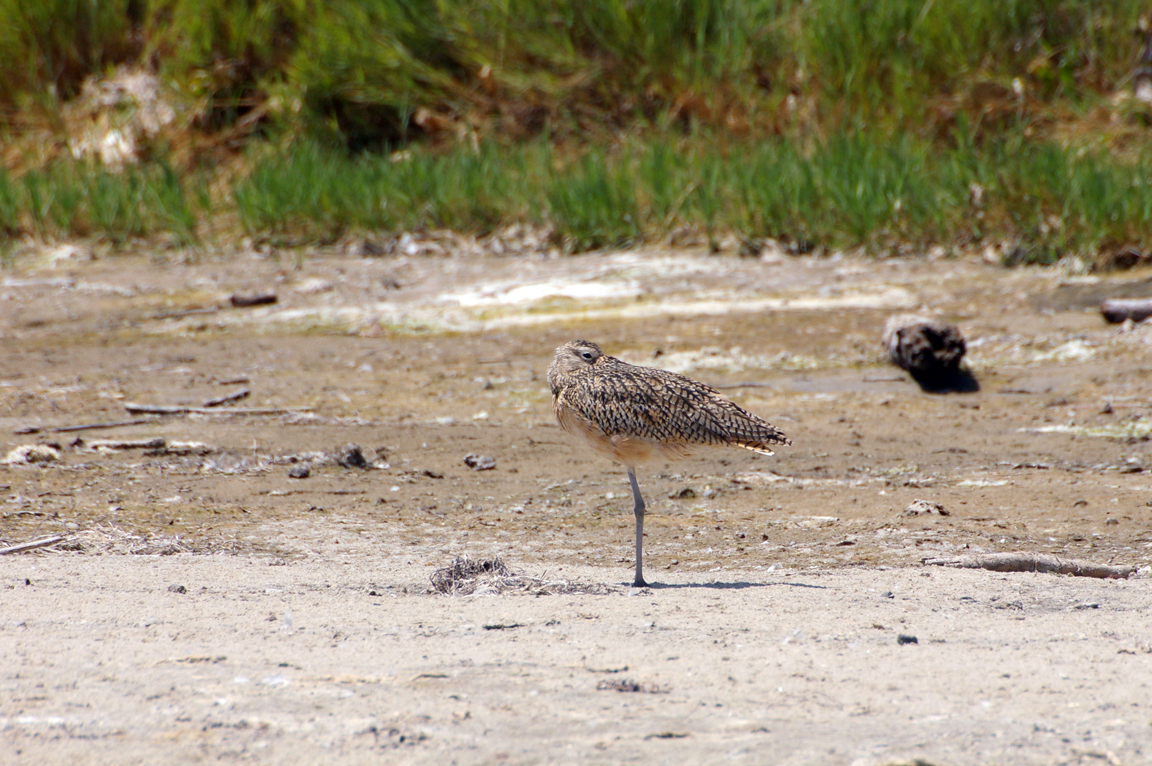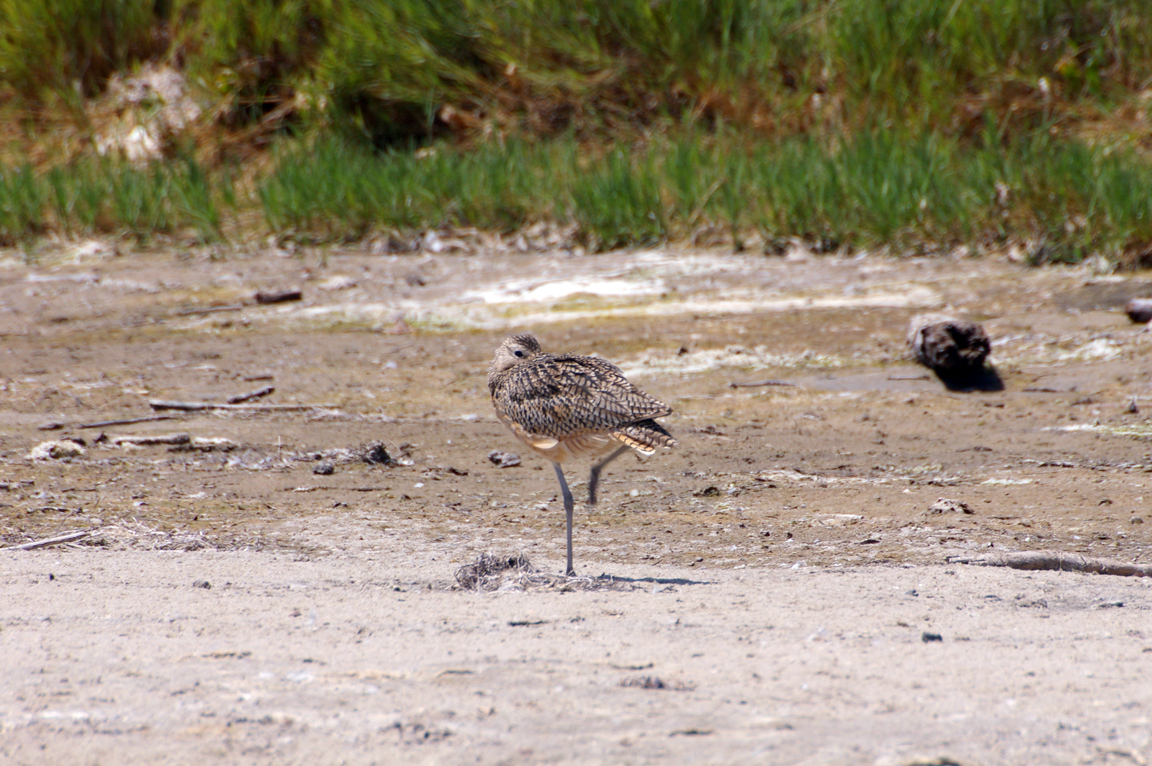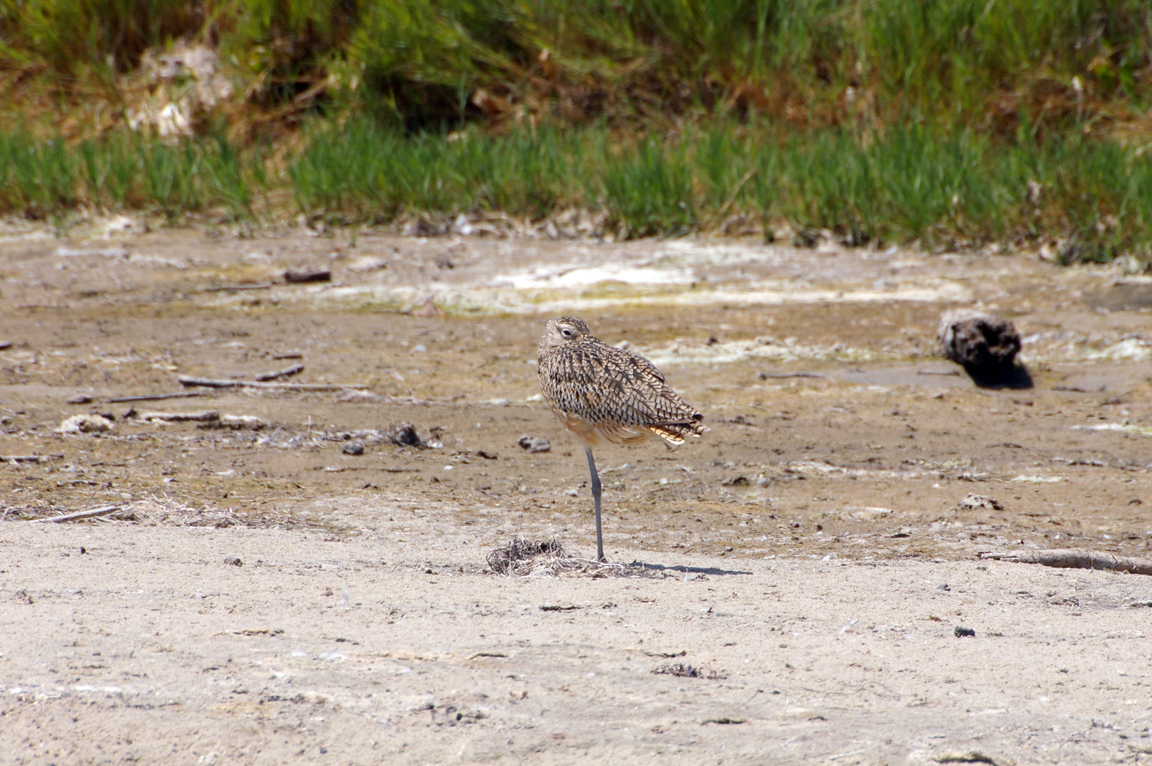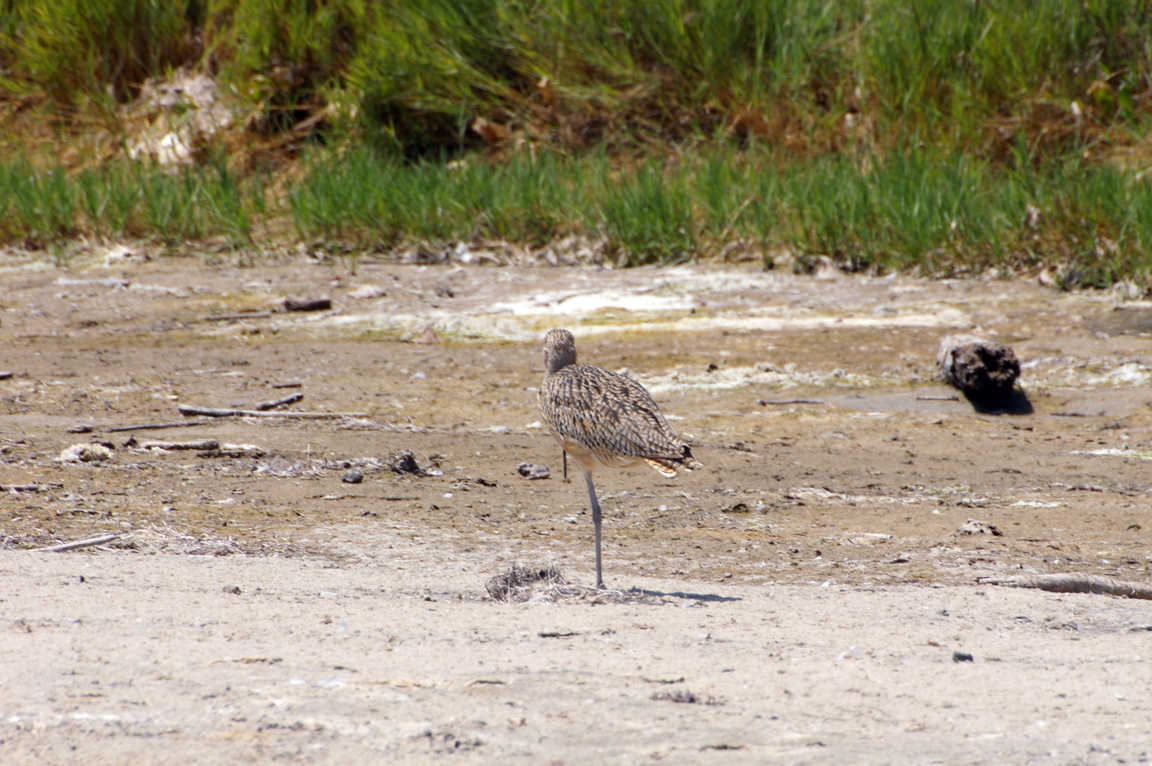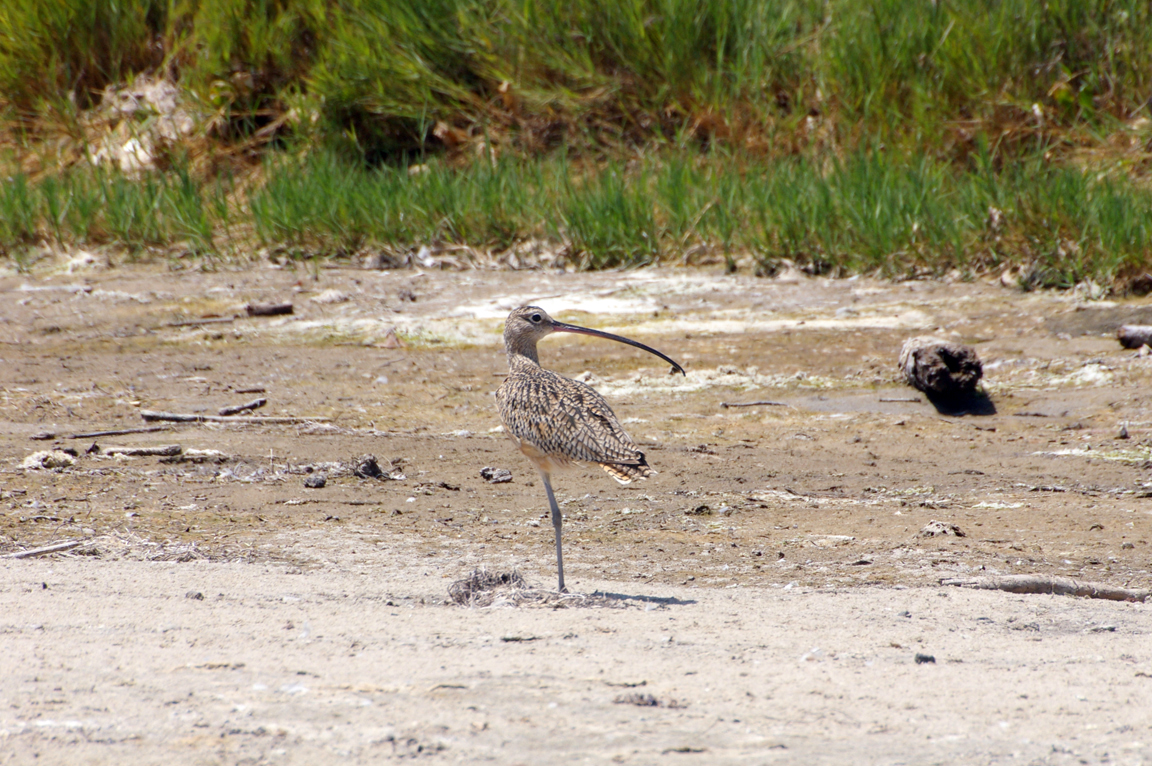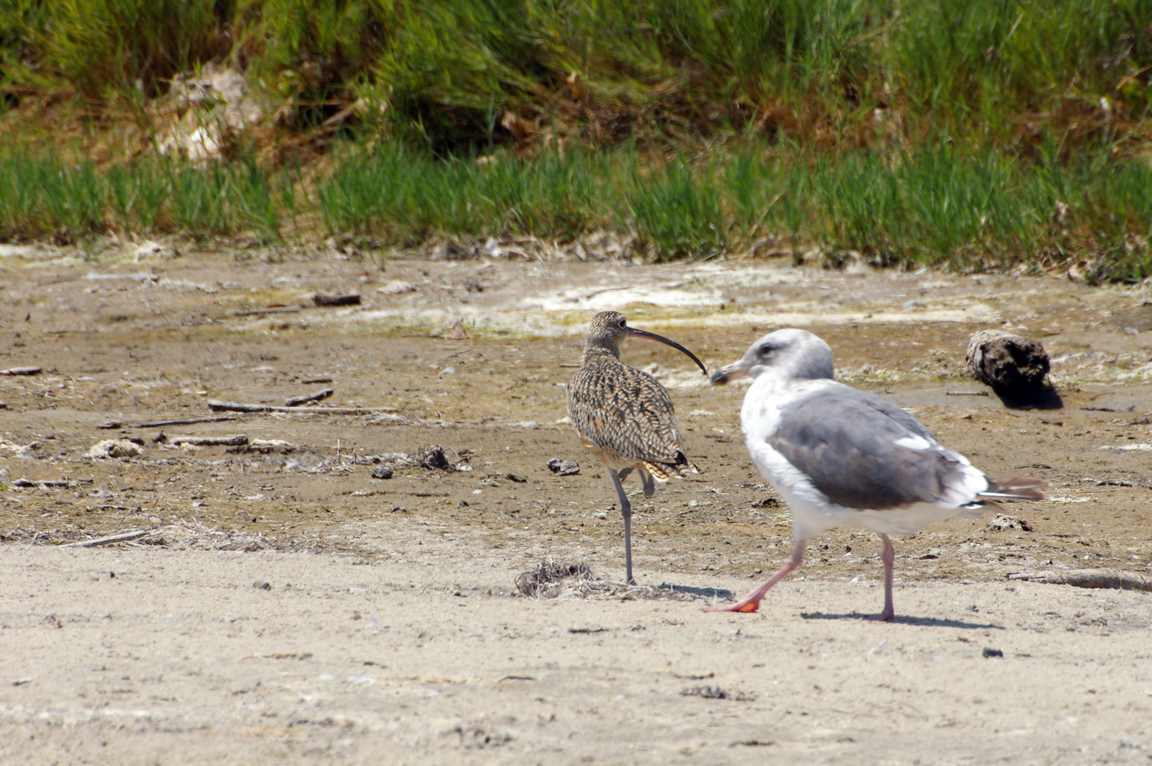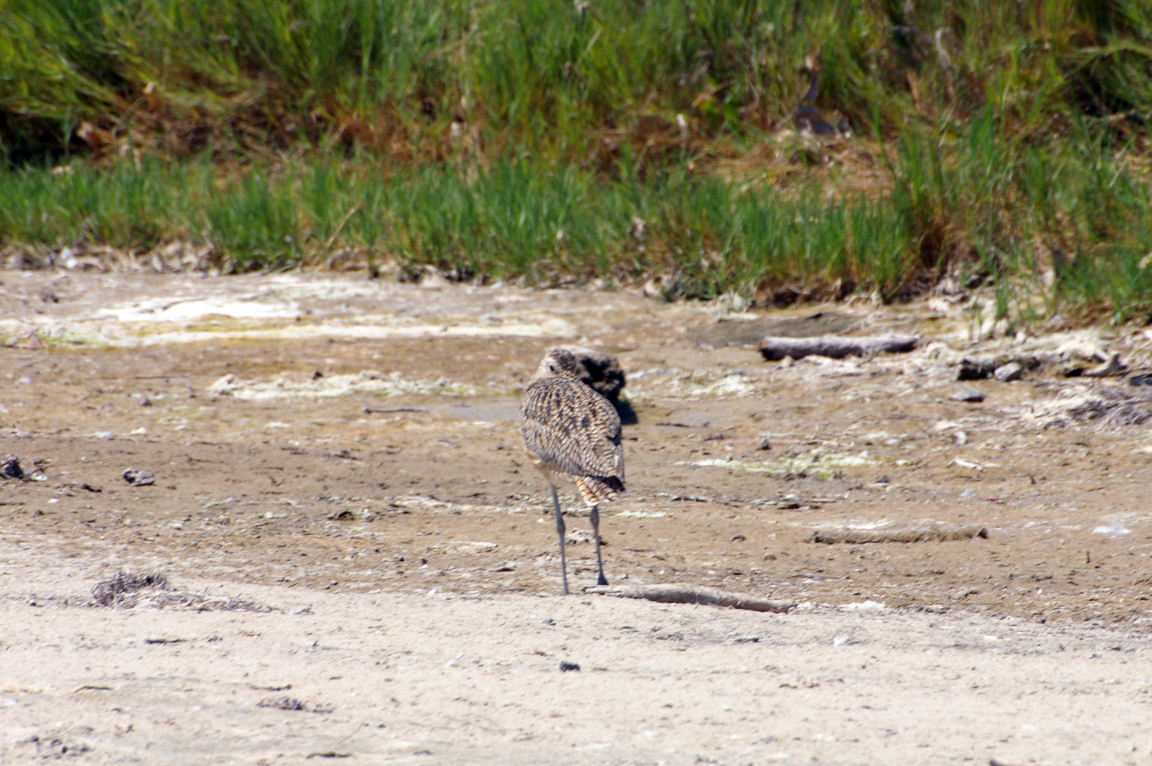|
|
|
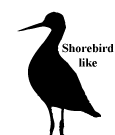 |
Long-billed Curlew
|
| Numenius americanus | |
North America's largest shorebird, the Long-billed Curlew breeds in the grasslands of the Great Plains and Great Basin.
Interesting Information
-
Both the male and female Long-billed Curlew incubate the eggs, and both are aggressive in defense of nests and young. The female typically abandons the brood two to three weeks after hatching and leaves brood care to her mate. Despite this abandonment the same male and female often pair with each other again the next year.
-
Although the Long-billed Curlew's diet includes many species of invertebrates and some vertebrates, its bill is best adapted for capturing shrimp and crabs living in deep burrows on tidal mudflats (its wintering grounds) or burrowing earthworms in pastures.
-
The female Long-billed Curlew's bill is longer than the male's, and is a different shape. Hers is flatter on top with a more pronounced curve at the tip. His is gently curved throughout its length. The juvenile's bill is distinctly shorter than the adults' during its first few months, but it may be equal to the male's length some time in its first year.
Description
Adult Description
-
Large shorebird.
-
Extremely long, down-curved bill.
-
Buffy brown in color.
-
Plain crown.
-
Length Range: 58 cm (23 in)
-
Weight: 544 g (19.2 oz)
-
Size: Large (16 - 32 in)
-
Color Primary: Brown, Buff
-
Underparts: Pale brown with some brown streaks.
-
Upperparts: Pale brown and black.
-
Back Pattern: Mottled
-
Belly Pattern: Solid
-
Breast Pattern: Striped or streaked
Sex Differences
Sexes similar
Immature
Similar to adult, bill shorter.
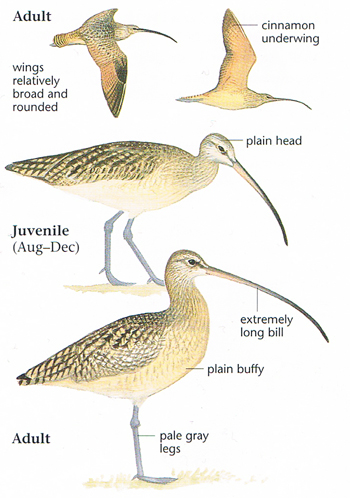
Photo taken from: The Sibley Field Guide by David Allen Sibley
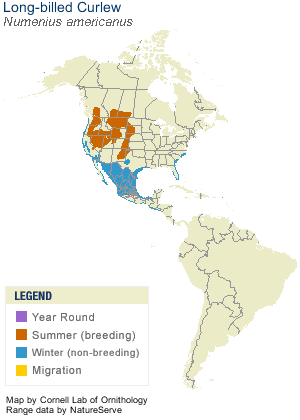
© 2003 Cornell Lab of Ornithology
|
Habitat |
|
Long-billed Curlew: Breeds from southern Canada to northern California, Utah, northern New Mexico, and Texas. Spends winters from California, Texas, Louisiana, South Carolina, and Florida southward. Breeding habitat includes plains and prairies. During migration, frequents lake and river shores, mudflats, salt marshes, and sandy beaches. |
|
Behavior |
|
Long-billed Curlews are often seen probing for food during the breeding season in groups, in pairs, or by themselves. Around the nest, however, curlews are highly territorial and exhibit a variety of threat displays. When flying, curlews jump into the air to take off and then alternate between flapping and gliding. |
|
Food |
|
Long-billed Curlew: Feeds on insects such as grasshoppers, beetles, and butterflies, worms, crustaceans, and mollusks; also takes small vertebrates, including the eggs and young of other birds. |
Taxonomy
| Kingdom: | Animalia |
| Phylum: | Chordata |
| Subphylum: | Vertebrata |
| Class: | Aves |
| Order: | Charadriiformes |
| Family: | Scolopacidae |
| Subfamily: | Accipitrinae |
| Genus: | Numenius |
| Species: | Numenius americanus |
| Subspecies: | Numenius americanus americanus |
| Numenius americanus parvus |
Similar Species |
|
Whimbrel slightly shorter, with shorter bill, has distinct stripes on top of head, lacks cinnamon under the wings, and is more barred and less buffy. |
|
Bird Sound |
|
Call a harsh whistled "cur-lee," rising on second note. Also rapid whistled "kli-li-li-li." |
|
Eggs look like this |
|
Photo taken from: ARCTOS Collaborative Collection Management Solution |
